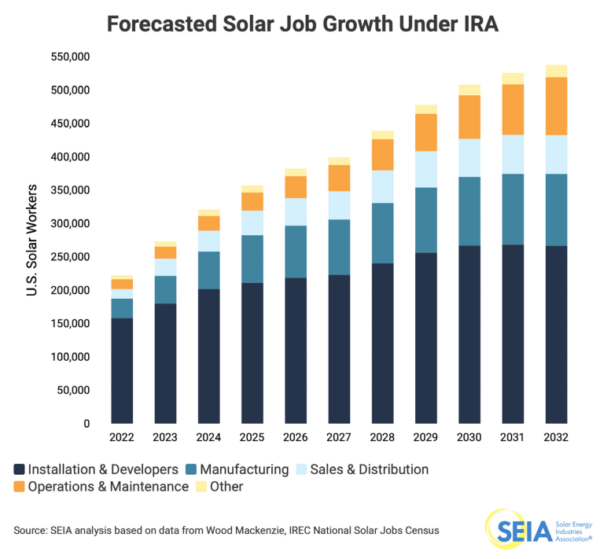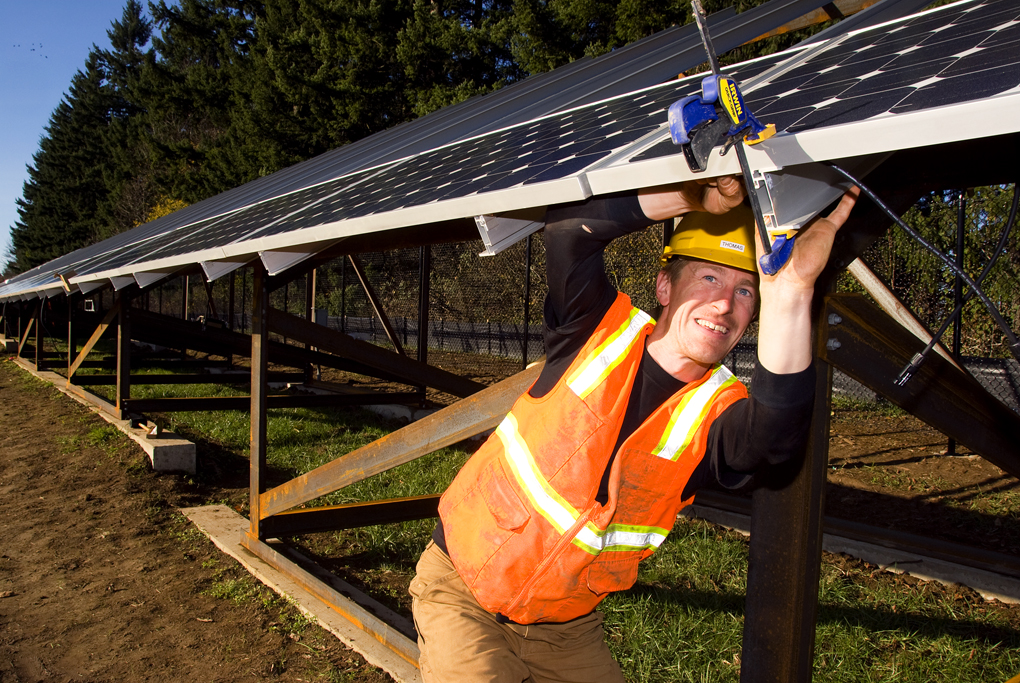A transition to a carbon-free energy sector is going to take a large, well-trained workforce, and readying that workforce may pose a challenge in the near-term. The Interstate Renewable Energy Council (IREC) said 89% of solar firms reported in 2021 they’ve had difficulty finding qualified applicants.
Solar now represents 59% of the clean power capacity in development, gaining 4% in share from 2021 to 2022, said the American Clean Power Association. To reach the federal goal of 100% carbon pollution-free electricity by 2035, the solar workforce will need to more than double from 255,000 to over 538,000, said the Solar Energy Industries Association (SEIA).

What’s more, for projects to receive the full 30% base Investment Tax Credit, rather than just 6%, Inflation Reduction Act of 2022 includes a requirement that 12.5% of a project’s labor hours must be from qualified apprentices participating in an apprenticeship program. Qualified programs must be registered with the Department of Labor (DOL) or a state equivalent.
(Read: “Inside the IRA: How does prevailing wage affect my solar tax credit?”)
While the DOL reports over 600,000 registered apprentices nationwide, solar industry members say there are not enough apprentice programs across the nation to meet demand for solar jobs.
“The IRA legislation provides a ‘good faith’ exception for the apprenticeship requirement if a company’s hiring request is rejected by a registered apprenticeship program, or if the apprentice program fails to respond within five days,” said community solar developer Nautilus Solar in a whitepaper, “but questions about the logistics of that exception remain.”
Nautilus Solar suggested that standardizing the prevailing wage could help address uncertainty about tax credit requirements. The company said engineering, procurement, and construction (EPC) costs continuing to “skyrocket” in recent months may artificially increase prevailing wage comparisons, and therefore may falsely burden wage standards developers are asked to meet.
The whitepaper recommends increased investment in education and training programs to attract more workers, partnering with local schools, vocational schools, and community colleges to promote careers in the solar industry, and raising awareness to change societal perceptions about highly skilled, trade positions.
Solar accounted for 39% of all new electric generating capacity additions in the first half of 2022 and is expected to triple in cumulative capacity in five years. Effective training will be needed to achieve this goal, and developers will likely shoulder raised EPC costs as the new prevailing wage requirements are met.
IREC offers a solar training best practices series, with expert recommendations from the North American Board of Certified Energy Practitioners (NABCEP), solar developers, the SolarTech Consortium, and more.
The in-depth series offers insights for how to become an effective solar teacher, curriculum and program development, introduces six examples of successful existing solar training programs, offers textbooks, references, and other instructional resources. It also contains a guide for assisting faculty and administrators at colleges, universities, and other technical and training institutions that seek to develop new PV education laboratories or improve existing ones.
In addition to training a qualified workforce, engagement with authorities having jurisdiction (AHJs), fire departments, electric utilities, testing labs, building owners, facility managers, and other stakeholders will be needed. IREC runs a Clean Energy Clearinghouse to connect these parties to educational resources for effectively implementing the energy transition.
Find more about solar career training opportunities with IREC here.
This content is protected by copyright and may not be reused. If you want to cooperate with us and would like to reuse some of our content, please contact: editors@pv-magazine.com.









By submitting this form you agree to pv magazine using your data for the purposes of publishing your comment.
Your personal data will only be disclosed or otherwise transmitted to third parties for the purposes of spam filtering or if this is necessary for technical maintenance of the website. Any other transfer to third parties will not take place unless this is justified on the basis of applicable data protection regulations or if pv magazine is legally obliged to do so.
You may revoke this consent at any time with effect for the future, in which case your personal data will be deleted immediately. Otherwise, your data will be deleted if pv magazine has processed your request or the purpose of data storage is fulfilled.
Further information on data privacy can be found in our Data Protection Policy.